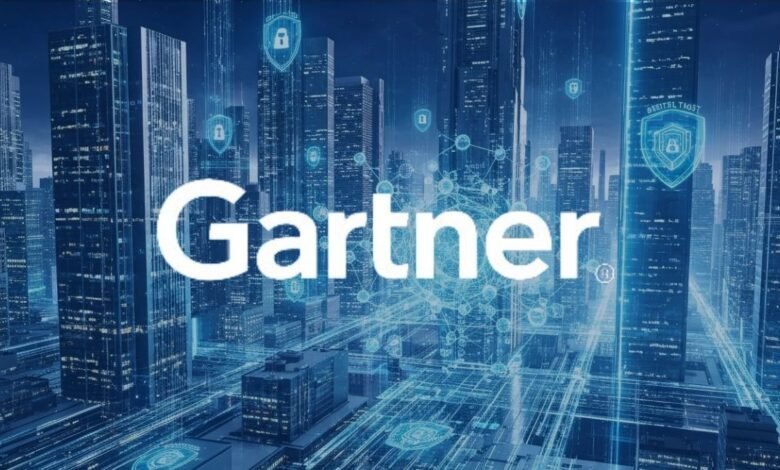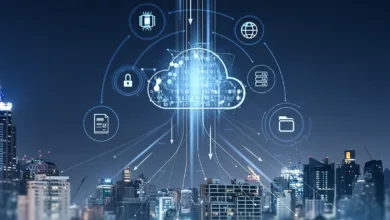Gartner’s Top Strategic Tech Trends for 2026 Revealed

▼ Summary
– Gartner identifies 2026’s top strategic technology trends as tightly interwoven catalysts for business transformation in an AI-powered, hyperconnected world.
– AI Supercomputing Platforms integrate diverse computing paradigms to handle complex workloads, with over 40% of enterprises expected to adopt them by 2028.
– Multiagent Systems use collections of AI agents to automate complex processes, upskill teams, and enable collaboration between people and AI.
– Domain-Specific Language Models provide higher accuracy and compliance for specialized tasks, predicted to comprise over half of enterprise GenAI models by 2028.
– AI Security Platforms offer unified protection against AI-specific risks, with over 50% of enterprises expected to use them by 2028 to secure AI investments.
Business and technology leaders preparing for 2026 should focus on several key strategic technology trends identified by Gartner, which highlight an increasingly interconnected, AI-driven business environment. These developments emphasize the need for responsible innovation, operational excellence, and digital trust as organizations navigate rapid technological change and heightened market volatility.
According to Gene Alvarez, a Distinguished VP Analyst at Gartner, technology leaders will face a pivotal year in 2026, marked by disruption, innovation, and risk unfolding at an unprecedented pace. The trends identified are deeply interconnected, reflecting a world where AI and hyperconnectivity are central to business strategy.
Tori Paulman, VP Analyst at Gartner, noted that the current pace of innovation is unlike anything seen before. More innovations have emerged in a single year than in previous periods, making it essential for organizations to act now. Those who do will not only manage volatility effectively but also shape their industries for decades.
The top strategic technology trends for 2026 include:
- AI Supercomputing Platforms
These platforms bring together CPUs, GPUs, AI ASICs, neuromorphic systems, and alternative computing models to handle complex workloads with exceptional performance and efficiency. They combine powerful processors, large memory capacity, specialized hardware, and orchestration software to support data-heavy tasks in machine learning, simulation, and analytics.
Gartner forecasts that by 2028, more than 40% of top enterprises will integrate hybrid computing architectures into critical workflows, a significant increase from the current 8%. Industries such as healthcare, biotech, financial services, and utilities are already using these platforms to accelerate drug modeling, simulate market risks, and optimize energy grids.
- Multiagent Systems
Multiagent systems consist of multiple AI agents that collaborate to achieve complex individual or shared objectives. These agents can operate within a single environment or be distributed across different systems.
Adopting multiagent systems enables organizations to automate intricate processes, enhance team skills, and create new collaborative models between people and AI. Modular, specialized agents improve efficiency, accelerate delivery, and reduce risks by reusing proven solutions. This approach also supports scalability and helps organizations adapt quickly to evolving requirements.
- Domain-Specific Language Models (DSLMs)
While generic large language models often fall short for specialized business tasks, domain-specific language models deliver higher accuracy, lower costs, and better compliance. DSLMs are trained or fine-tuned using industry-specific or function-specific data, making them more reliable and effective for targeted applications.
By 2028, Gartner anticipates that over half of the generative AI models used by enterprises will be domain-specific. These models help AI agents interpret industry context accurately, supporting sound decision-making even in unfamiliar situations.
- AI Security Platforms
These platforms offer a unified approach to securing both third-party and custom AI applications. They centralize visibility, enforce usage policies, and protect against AI-specific threats such as prompt injection, data leakage, and unauthorized agent actions.
By 2028, more than 50% of enterprises are expected to adopt AI security platforms to safeguard their AI systems. These tools help CIOs monitor AI activity, enforce policies, and maintain consistent security controls.
- AI-Native Development Platforms
Using generative AI, these platforms enable faster and easier software development. Forward-deployed engineers work alongside domain experts to build applications, allowing small teams supported by AI to produce more software without increasing headcount.
Gartner predicts that by 2030, 80% of organizations will transition from large software engineering teams to smaller, more agile units augmented by AI.
- Confidential Computing
This approach protects sensitive data by isolating workloads within hardware-based trusted execution environments. It ensures privacy even from infrastructure owners or cloud providers, making it especially valuable for regulated industries and cross-competitor collaborations.
By 2029, Gartner expects more than 75% of operations on untrusted infrastructure to be secured using confidential computing.
- Physical AI
Physical AI embeds intelligence into real-world machines and devices, such as robots, drones, and smart equipment, enabling them to sense, decide, and act. It delivers measurable benefits in sectors prioritizing automation, adaptability, and safety.
As adoption grows, organizations will need new skills that bridge IT, operations, and engineering, creating opportunities for upskilling and collaboration.
- Preemptive Cybersecurity
With threats to networks, data, and connected systems rising exponentially, organizations are shifting from reactive defense to proactive protection. Gartner forecasts that by 2030, preemptive solutions will make up half of all security spending.
These solutions use AI-powered security operations, programmatic denial, and deception to act before attacks occur.
- Digital Provenance
As reliance on third-party software, open-source code, and AI-generated content increases, verifying the origin, ownership, and integrity of digital assets becomes essential. Tools such as software bills of materials, attestation databases, and digital watermarking help organizations validate and track assets across the supply chain.
Gartner warns that by 2029, organizations failing to invest adequately in digital provenance could face sanction risks amounting to billions of dollars.
- Geopatriation
This trend involves moving data and applications from global public clouds to local options, such as sovereign clouds, regional providers, or private data centers, due to geopolitical risks. Once limited to banks and governments, cloud sovereignty now affects a broad range of organizations.
Shifting workloads to providers with stronger sovereignty postures helps CIOs gain better control over data residency, compliance, and governance, aligning with local regulations and building customer trust.
(Source: ITWire Australia)

